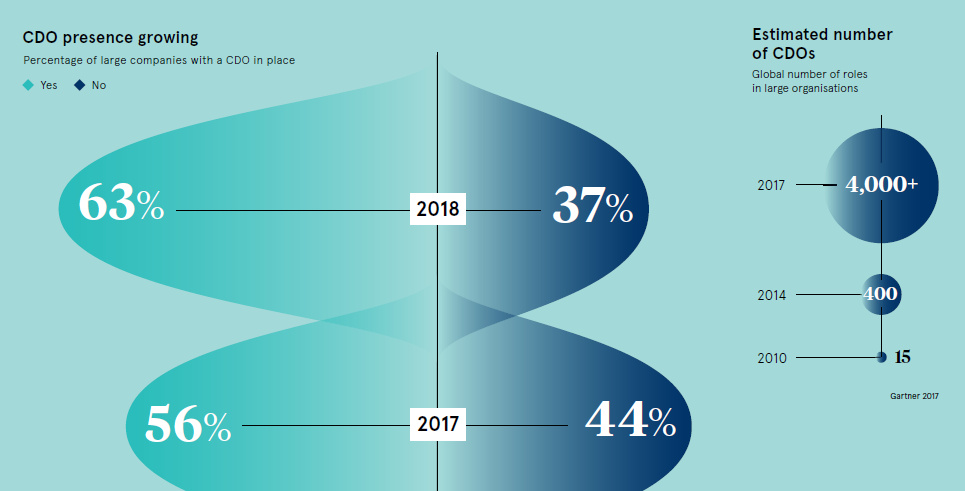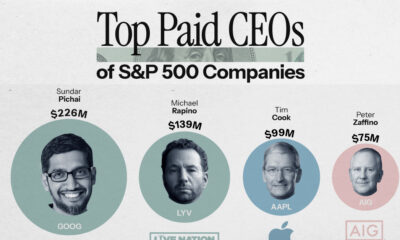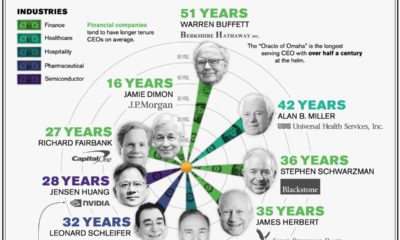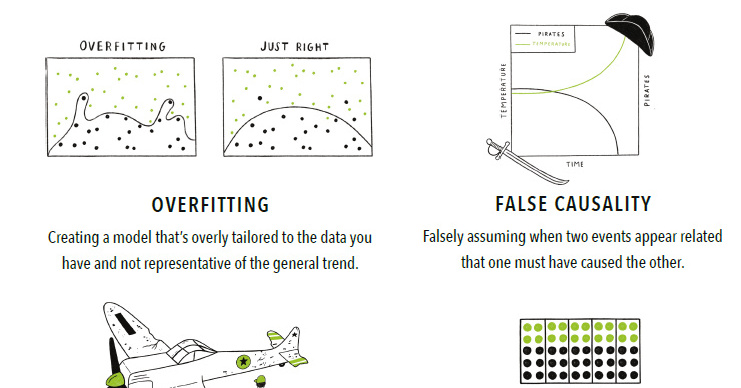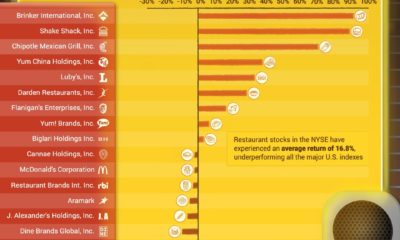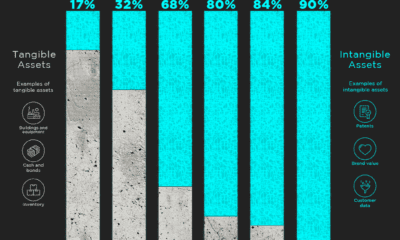Technology
The Rise of the Chief Data Officer (CDO)
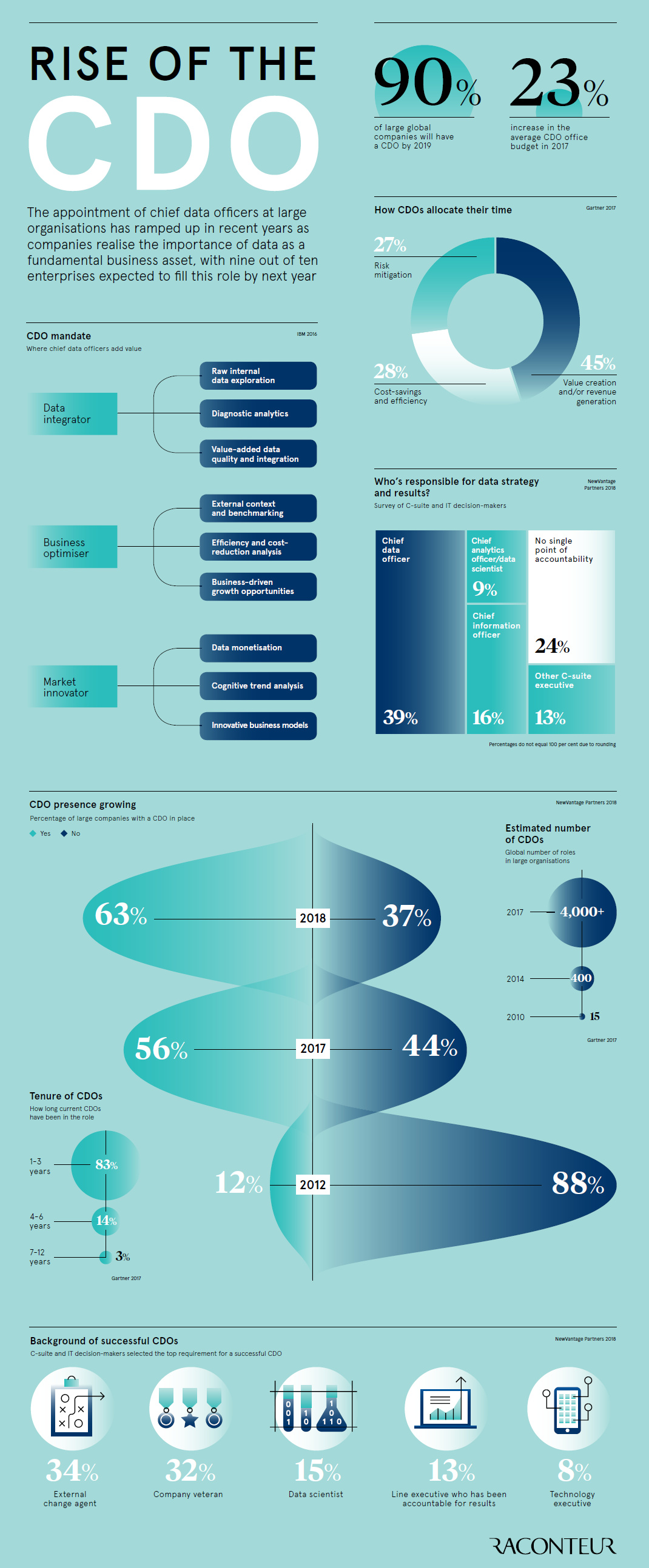
The Rise of the Chief Data Officer (CDO)
Data has taken on a central role in our daily lives, permeating nearly every activity in the business and public sectors. It’s now considered an essential piece of the puzzle for any serious organization, enabling everything from game-changing insights to the birth of entire new technologies or business models.
In fact, data is so important nowadays that some experts are saying that it’s the most valuable resource in the modern economy, even going as far as describing data as the “new oil”. While not everyone agrees with this kind of hyperbole, it’s fair to say that how organizations approach data will be a major determining factor for future growth and success – and thus, having someone to make the most of data is crucial.
To guide these kinds of decisions, many organizations are making a structural change to their C-suite: the addition of a Chief Data Officer (CDO).
The Changing C-Suite
The set of executives that reports to the modern CEO is constantly evolving, and over the last couple of decades we’ve seen the implementation of other tech-focused positions such as the Chief Information Officer (CIO) and the Chief Technology Officer (CTO).
The CDO is the newest addition to the mix, and it’s a job that’s responsible for enterprise wide governance and utilization of information as an asset. This includes oversight over data processing, analysis, data mining, information trading, and other means.
Today’s infographic comes from Raconteur, and it breaks down organizational perspectives on the role of the CDO, along with how execs in this fast-evolving position are allocating their time to achieve their mandates.
The CDO Mandate
Approximately 90% of large global organizations will have a CDO by 2019, and the general mandate for most CDOs will be as follows:
Data Integrator:
Raw internal data exploration, diagnostic analytics, and value-added data quality and integration
Business Optimizer:
External context and benchmarking, cost-reduction analysis, and business-driven growth opportunities
Market Innovator:
Data monetization, cognitive trend analysis, and innovative business models
Meanwhile, Gartner breaks it down in a similar way, suggesting that CDOs spend 45% of their time focused on value creation or revenue generation, 27% on risk mitigation, and 28% on cost savings and efficiency.
Who Makes a Good CDO?
As with any new type of role, there are always questions about how to get someone that is the right fit.
Here is the background of successful CDOs thus far, according to NewVantage Partners:
| Background | Percentage of Successful CDOs |
|---|---|
| External change agent | 34% |
| Company veteran | 32% |
| Data scientist | 15% |
| Results-driving line executive | 13% |
| Technology executive | 8% |
Like the constantly evolving landscape of data itself, the role of CDO will keep changing in the future as more organizations search for new ways to make the most of this precious resource.
Technology
Visualizing AI Patents by Country
See which countries have been granted the most AI patents each year, from 2012 to 2022.

Visualizing AI Patents by Country
This was originally posted on our Voronoi app. Download the app for free on iOS or Android and discover incredible data-driven charts from a variety of trusted sources.
This infographic shows the number of AI-related patents granted each year from 2010 to 2022 (latest data available). These figures come from the Center for Security and Emerging Technology (CSET), accessed via Stanford University’s 2024 AI Index Report.
From this data, we can see that China first overtook the U.S. in 2013. Since then, the country has seen enormous growth in the number of AI patents granted each year.
| Year | China | EU and UK | U.S. | RoW | Global Total |
|---|---|---|---|---|---|
| 2010 | 307 | 137 | 984 | 571 | 1,999 |
| 2011 | 516 | 129 | 980 | 581 | 2,206 |
| 2012 | 926 | 112 | 950 | 660 | 2,648 |
| 2013 | 1,035 | 91 | 970 | 627 | 2,723 |
| 2014 | 1,278 | 97 | 1,078 | 667 | 3,120 |
| 2015 | 1,721 | 110 | 1,135 | 539 | 3,505 |
| 2016 | 1,621 | 128 | 1,298 | 714 | 3,761 |
| 2017 | 2,428 | 144 | 1,489 | 1,075 | 5,136 |
| 2018 | 4,741 | 155 | 1,674 | 1,574 | 8,144 |
| 2019 | 9,530 | 322 | 3,211 | 2,720 | 15,783 |
| 2020 | 13,071 | 406 | 5,441 | 4,455 | 23,373 |
| 2021 | 21,907 | 623 | 8,219 | 7,519 | 38,268 |
| 2022 | 35,315 | 1,173 | 12,077 | 13,699 | 62,264 |
In 2022, China was granted more patents than every other country combined.
While this suggests that the country is very active in researching the field of artificial intelligence, it doesn’t necessarily mean that China is the farthest in terms of capability.
Key Facts About AI Patents
According to CSET, AI patents relate to mathematical relationships and algorithms, which are considered abstract ideas under patent law. They can also have different meaning, depending on where they are filed.
In the U.S., AI patenting is concentrated amongst large companies including IBM, Microsoft, and Google. On the other hand, AI patenting in China is more distributed across government organizations, universities, and tech firms (e.g. Tencent).
In terms of focus area, China’s patents are typically related to computer vision, a field of AI that enables computers and systems to interpret visual data and inputs. Meanwhile America’s efforts are more evenly distributed across research fields.
Learn More About AI From Visual Capitalist
If you want to see more data visualizations on artificial intelligence, check out this graphic that shows which job departments will be impacted by AI the most.
-

 Mining1 week ago
Mining1 week agoGold vs. S&P 500: Which Has Grown More Over Five Years?
-

 Markets2 weeks ago
Markets2 weeks agoRanked: The Most Valuable Housing Markets in America
-

 Money2 weeks ago
Money2 weeks agoWhich States Have the Highest Minimum Wage in America?
-

 AI2 weeks ago
AI2 weeks agoRanked: Semiconductor Companies by Industry Revenue Share
-

 Markets2 weeks ago
Markets2 weeks agoRanked: The World’s Top Flight Routes, by Revenue
-

 Countries2 weeks ago
Countries2 weeks agoPopulation Projections: The World’s 6 Largest Countries in 2075
-

 Markets2 weeks ago
Markets2 weeks agoThe Top 10 States by Real GDP Growth in 2023
-

 Demographics2 weeks ago
Demographics2 weeks agoThe Smallest Gender Wage Gaps in OECD Countries

